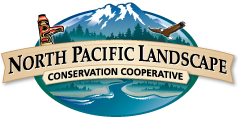Tools to Plan for Hazards Resilience and Climate Change by Lauren Long and David Betenbaugh of NOAA
Meeting Date: 8/26/2015
- 8/26/2015
Location: Webinar
Website: Website
EBM Tools Webinar on Aug 26, 2015 at 1:00 PM EDT.
A major challenge for coastal communities is planning for the impacts of current and future flood hazards. This webinar will highlight two resources that NOAA’s Office for Coastal Management has developed to facilitate resilience planning in coastal communities. The first step in planning for flood impacts is to understand a community’s exposure to coastal flood hazards. The Coastal Flood Exposure Mapper helps communities get the conversation started about flood hazard risks and vulnerabilities by providing maps and information showing where people, places, and natural resources are at risk from flooding. The mapper displays shallow coastal flooding, flood zones, storm surge, sea level rise, and a composite view of flood hazards, along with societal, infrastructure, and ecosystem information. The next step in planning is to identify and prioritize strategies that address climate and hazard risks. Coastal green infrastructure is an emerging approach that communities are using to reduce the impacts of coastal hazards. With limited budgets for projects like green infrastructure, communities must prioritize natural areas that give the most benefits. The Green Infrastructure Mapping Guide is an interactive online resource to help spatial analysts who are tasked with using GIS to prioritize green infrastructure to reduce hazard impacts and aid in climate adaptation.
Webinar co-sponsored by OpenChannels.org and the EBM Tools Network.
After registering, you will receive a confirmation email containing information about joining the webinar.
